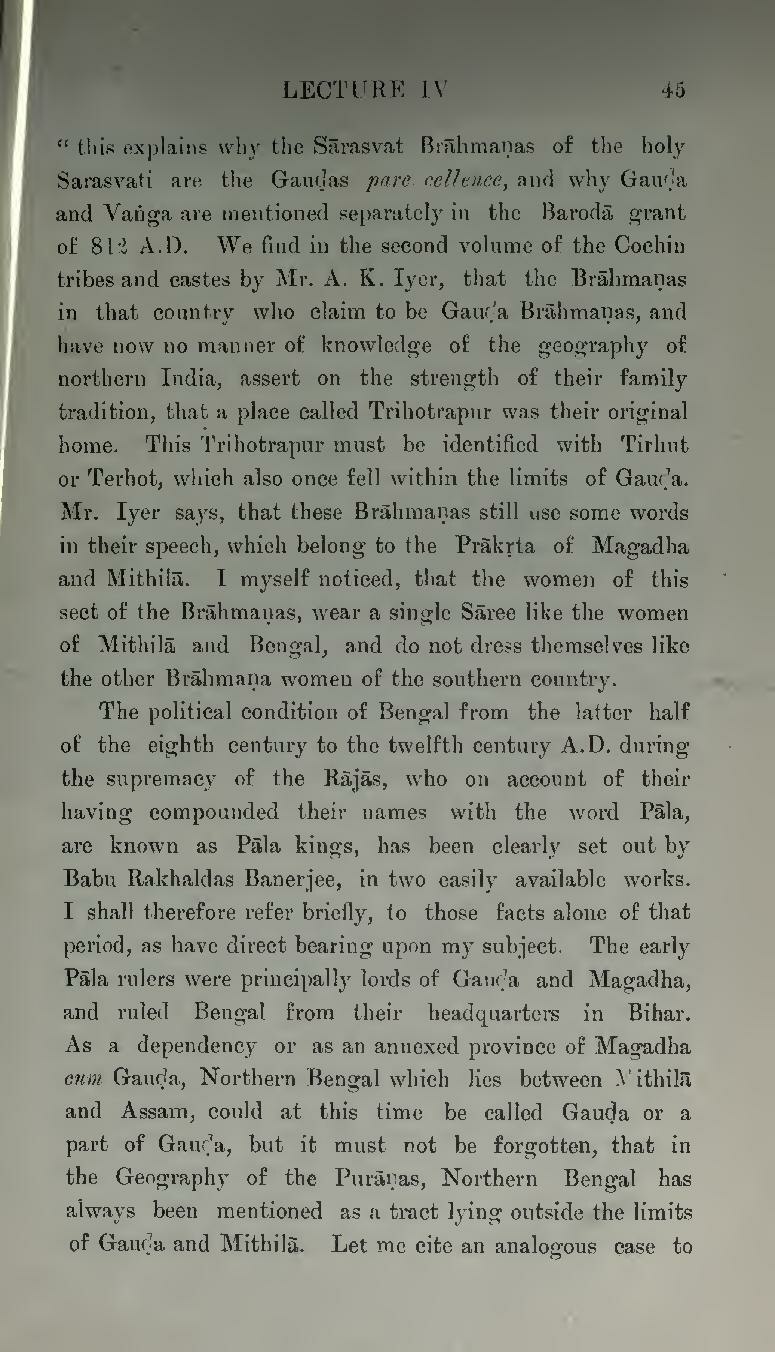"this explains why the Sārasvat Brāhmaṇas of the holy Sarasvati are the Gauḍas pare cellence, and why Gauḍa and Vaṅga are mentioned separately in the Barodā grant of 812 A.D. We find in the second volume of the Cochin tribes and castes by Mr. A. K. Iyer, that the Brāhmaṇas in that country who claim to be Gauḍa Brāhmaṇas, and have now no manner of knowledge of the geography of northern India, assert on the strength of their family tradition, that a place called Trihotrapur was their original home. This Trihotrapur must be identified with Tirhut or Terhot, which also once fell within the limits of Gauḍa. Mr. Iyer says, that these Brāhmaṇas still use some words in their speech, which belong to the Prākṛta of Magadha and Mithilā. I myself noticed, that the women of this sect of the Brāhmaṇas, wear a single Sāree like the women of Mithilā and Bengal, and do not dress themselves like the other Brāhmaṇa women of the southern country.
The political condition of Bengal from the latter half of the eighth century to the twelfth century A.D. during the supremacy of the Rājās, who on account of their having compounded their names with the word Pāla, are known as Pāla kings, has been clearly set out by Babu Rakhaldas Banerjee, in two easily available works. I shall therefore refer briefly, to those facts alone of that period, as have direct bearing upon my subject. The early Pāla rulers were principally lords of Gauḍa and Magadha, and ruled Bengal from their headquarters in Bihar. As a dependency or as an annexed province of Magadha cum Gauḍa, Northern Bengal which lies between Mithilā and Assam, could at this time be called Gauḍa or a part of Gauḍa, but it must not be forgotten, that in the Geography of the Purāṇas, Northern Bengal has always been mentioned as a tract lying outside the limits of Gauḍa and Mithilā. Let me cite an analogous case to
